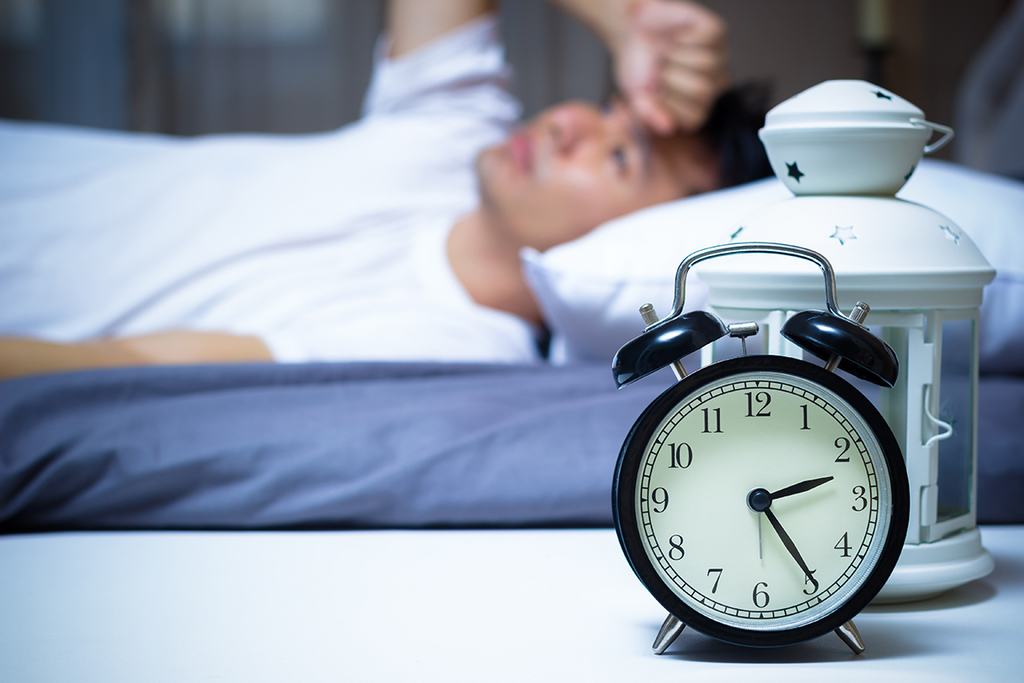We spend around one third of our lives asleep, and some of that time is also spent dreaming. While theories abound, researchers still don’t know exactly why we dream. Some experts believe dreams relate to what’s going on during our waking lives, while others suspect they’re largely symbolic.
Regardless of why we have them, dreams are stories, ideas, pictures and emotions created in our minds while we sleep. The emotional range experienced during dreaming is vast — we can be elated, terrified, despondent, and everything in between. Also, the content of our dreams can vary from one person to the next. Below, I’ll share research-based insights into all things dreams.
Fast Facts
- On average, we suspect that people have between four and six dreams per night.
- Some researchers estimate that people forget roughly 95% of their dreams when they wake up.
- One study shows that 65% of what we dream relates to experiences we’ve had while we’re awake.
- According to a 2022 survey of 2,007 Americans, which was conducted by Amerisleep, a mattress and sleep brand, falling is the most common recurring dream.
Facts About Dreams
The field of dream research is ongoing, and the questions of why we dream and where dreams come from still haven’t been definitively answered. There’s a lot of debate as to what the images, thoughts, and feelings we have while we’re asleep really mean.

Dreams do tend to share a few characteristics, however. Dreaming is involuntary and usually has a first-person perspective, which may trigger strong emotions and feature people with whom the dreamer interacts during waking others. Other elements of waking life may also appear in dreams, though they can be distorted and fantastical.
It appears that we start dreaming early. Although research is limited, some experts speculate babies as young as six months old dream.
It’s difficult to say definitively how many dreams we have every night, since it’s estimated that people forget most of their dreams when they wake up. A lot of dream research uses self-reported data, which may not be very reliable. Still, some research suggests the average person has between four and six dreams each night. If you sleep for eight hours, you might spend about two hours in REM sleep, when dreams are most likely to occur.
As for how long individual dreams last, it’s also hard to say. Early REM cycles usually last about 10 minutes and get longer as we move through sleep stages — late REM cycles can last up to an hour. But there’s no conclusive evidence that these time frames correspond with dream lengths, and dreaming can happen in non-REM sleep, too. Trying to remember how long a particular dream was can be misleading as well, since some seem to last much longer than they really are. Some research supports the idea that dreams in REM last longer than non-REM dreams. They may also be more vivid, emotional, and nonsensical, while dreams in non-REM sleep tend to be less detailed and more coherent.
The ability to remember dreams can depend on specific factors like personality, creativity, cognitive function, and mental state. Research shows that roughly 80% of people who are woken up during REM sleep can remember their dreams. Upon awakening, we may only remember a dream once or twice a week. Interestingly, women appear to be more likely to remember their dreams than men, according to an older meta-analysis from 2008.

Types of Dreams
Dreams can come in different forms, from lucid to recurring, and the same person might experience them all during their lifetime.
Lucid Dreams
Lucid dreaming is when you’re aware that you’re dreaming or find that you can control what’s happening in your dream. That can make them much more vivid. While half of the population will experience lucid dreaming at least once in their lifetime, frequent lucid dreaming is rare. It’s most common during REM sleep and most likely to happen in children, adolescents, and people with narcolepsy.
Like dreams in general, researchers aren’t sure why lucid dreams happen. It could be related to changes in brain activity during REM sleep, which bring you closer to consciousness.
Nightmares
A nightmare is a type of bad dream that has distressing content and causes the sleeper to wake up. That’s the feature that makes a true nightmare different from a bad dream that feels threatening or bothersome. Frequent nightmares can have a negative impact on sleep quality, affecting daytime thinking and mood.
Nightmares are more common in people with mental health issues, including depression, anxiety, post-traumatic stress disorder, and bipolar disorder.

Night Terrors
A night terror is a sleep disorder that causes someone to wake suddenly from sleep in a terrified state. While exact causes are unknown, sleep terrors can be triggered by stress, conflicts, lack of sleep, or fever. They’re similar to nightmares, but the time at which they happen is different. While nightmares are most common during REM sleep in the early morning hours, night terrors typically happen in the first half of the night. They’re also most common in pre-adolescent boys and children between three and five years old. They’re much less likely to happen in adults.
Recurring Dreams
A recurring dream is one you have again and again. Recurring dreams are one of the most common kinds of dreams. It’s possible that recurring dreams are caused by an unresolved issue or period of strong emotion — they may help the dreamer make sense of the past experience. Common recurring dreams relate to flying, falling, or feeling frozen in fear.
Daydreams
Daydreaming happens while we’re awake. It’s a pleasant experience of spontaneous thoughts that are entirely unrelated to what’s happening around you. It’s a universal experience, but it can be both good and bad. Some daydreams are so absorbing that you stop paying attention to your surroundings.
Common Dreams and Their Meanings
Whether or not dreams hold any meaning and how they might be interpreted are hotly debated topics. While some psychologists believe that dreams offer insight into the mind and psyche, others think that dreams are too inconsistent to offer reliable meaning.
The content of a dream is likely to be related in some way to waking experiences, but the meaning of those real-world details in a dream remains a mystery. Still, while interpreting dreams is an imperfect science, dream interpretations are quite popular. Here are common dreams and their purported meanings:
- Dreams about falling. Carl Jung famously believed that dreams about falling are related to someone with too high an opinion of themselves — a sign that they need to come back down to earth. Sigmund Freud, on the other hand, saw it as a symbol of caving to sexual temptation. Dreams about falling could also be related to a sense of disappointment or feeling a lack of emotional or financial support.
- Dreams about being chased. This is also a common recurring dream. It might be related to something you’re avoiding in your waking life. If you’re the type to avoid confrontation or you have a tendency to procrastinate, you may be more likely to have a dream about being chased.
- Dreams about flying. Flying dreams can be related to anxiety or joy. Depending on how you fly in your dream and the emotions you experience, it could indicate high hopes or a sense of “flying high” in your waking life. If you aren’t enjoying flying in your dream, you may need to feel more grounded in your waking hours.
- Dreams about teeth falling out. Another common dream, this one could actually be based on a true dental issue instead of psychological stress or poor sleep quality (two other theories). Some experts also theorize that dreams related to the mouth could be related to communication issues.
- Dreams about being naked. A dream that you’re somewhere naked may be related to something in your waking life that brings you embarrassment or makes you feel vulnerable, exposed or under scrutiny.
- Dreams about death/dying. If you’re dreaming about death, it could be because something in your life is coming to a close. If it’s someone else who dies in your dream, it might suggest that your relationship might be ending.
What Influences Dreams?
Things we do while we’re awake can have an effect on our dreams.
Health
Your health can have a big influence on your dreams — specifically, how much quality sleep you’re getting. If you aren’t getting enough sleep, your brain activity may be disrupted, which may or may not affect your dreams.
Pregnancy, a time of increased hormone production, is also associated with vivid dreaming. More hormones can impact how the brain processes emotions and thoughts, which can result in more intense dreams. Those who experience mental health issues, such as anxiety or depression, can also have intense or even disturbing dreams and nightmares.

Sleep environment
Your sleep environment has a big effect on your ability to get quality sleep, and it could likewise influence your dreams. Sounds, smells, and even temperature changes can all be incorporated into dreams, because the brain is more receptive to this kind of stimuli during REM sleep.
Bright light, for example, hinders melatonin production, which can affect sleep quality and has the potential to trigger unsettling dreams. A mattress that traps heat and leads to overheating may also lead to more intense dreams, while loud noises that disrupt sleep can cause fragmented dreams. That’s why it’s important to manage light, temperature, and noise in the bedroom, along with choosing the best mattress for your body type, sleep style, and specific sleep needs.

Why Do We Dream?
Researchers can’t conclusively explain why we dream, but there are plenty of theories.
- Psychoanalytic theory. This theory, developed by Sigmund Freud, is that dreams represent our unconscious wishes and desires. They are a kind of “wish fulfillment” for wants that we deny in our waking lives, so they become part of the unconscious mind. By studying our dreams, we can better understand this part of ourselves.
- Carl Jung’s dream theory. Jung believed that dreams served as a balance between the conscious and unconscious minds to help maintain a healthy dynamic. He suggested that dreams serve as messages sent from the unconscious mind and contain insights we fail to see when we’re awake.
- Activation-Synthesis Dream Theory. This theory takes a neurological approach to why we dream and suggests that dreaming is the brain’s attempt to make sense of the neural activity that happens while we sleep.
- Continual Activation Theory. This theory holds that dreaming is the result of random memories processed by the brain as it moves this information into long-term memory. The brain stays active and different memories are processed during specific sleep stages, which creates a steady stream of content.
- Memory Consolidation Theory. This theory is somewhat similar to the continual activation theory, but it suggests that the consolidation of memory while we sleep influences our dreams. The memory consolidation process seems to influence conscious experience while we sleep, leading to dreams that we can recall when we wake up.
Myths About Dreams
Because there’s so much about dreams that we have yet to understand, there are a lot of pervasive myths out there. Some people insist that they only dream in black and white. One study shows that may be true, but true grayscale dreams are only experienced by people who grew up with black and white media. Today, people are more likely to dream in color.
The myth that everyone dreams isn’t a myth. It’s true that everyone dreams, but many people don’t remember their dreams when they wake up. As for the myth that dreams predict the future, there’s no scientific evidence that this is the case. That might be a good thing, if you’re waking up after dreaming that you gave a presentation naked!
How To Remember Your Dreams Better
If you’re interested in improving your dream recall, there are a few techniques you might try.
- Journaling. Keeping a dream journal in which you record your dreams as soon as you wake up can help train the brain to better retain dream memories.
- Following a consistent sleep routine. Sticking to regular bed and rise times can help support a healthy sleep cycle and ensure you experience REM sleep, which is when dreams are more vivid and may be easier to remember.
- Talk about your dreams. Sharing your dreams with a partner or friend is similar to journaling. By talking through your memories, you may find you can remember more details.
- Limit before-bed distractions. As part of a consistent sleep routine, avoid scrolling on your phone or watching television, which can be overstimulating to the brain. Instead, practice relaxation techniques to help promote a sense of calm in preparation for sleep. Going to sleep in this state can help you reach REM sleep faster because it eases the transition between sleep stages.
Summary
While concrete details about how and why we dream remain very much a mystery, researchers are learning more about what happens when we shut our eyes. Whether you remember them or not, you spend some of your sleeping hours in dream land. You can build your dream recall by following a consistent sleep routine, limiting distractions before bed, and making an effort to journal about what you remember when you wake up. As for interpreting those dreams, there are a lot of theories, but it seems to be largely subjective. If you’re looking for meaning in your dreams, journaling may help you pinpoint patterns that offer insight into your unconscious mind.


